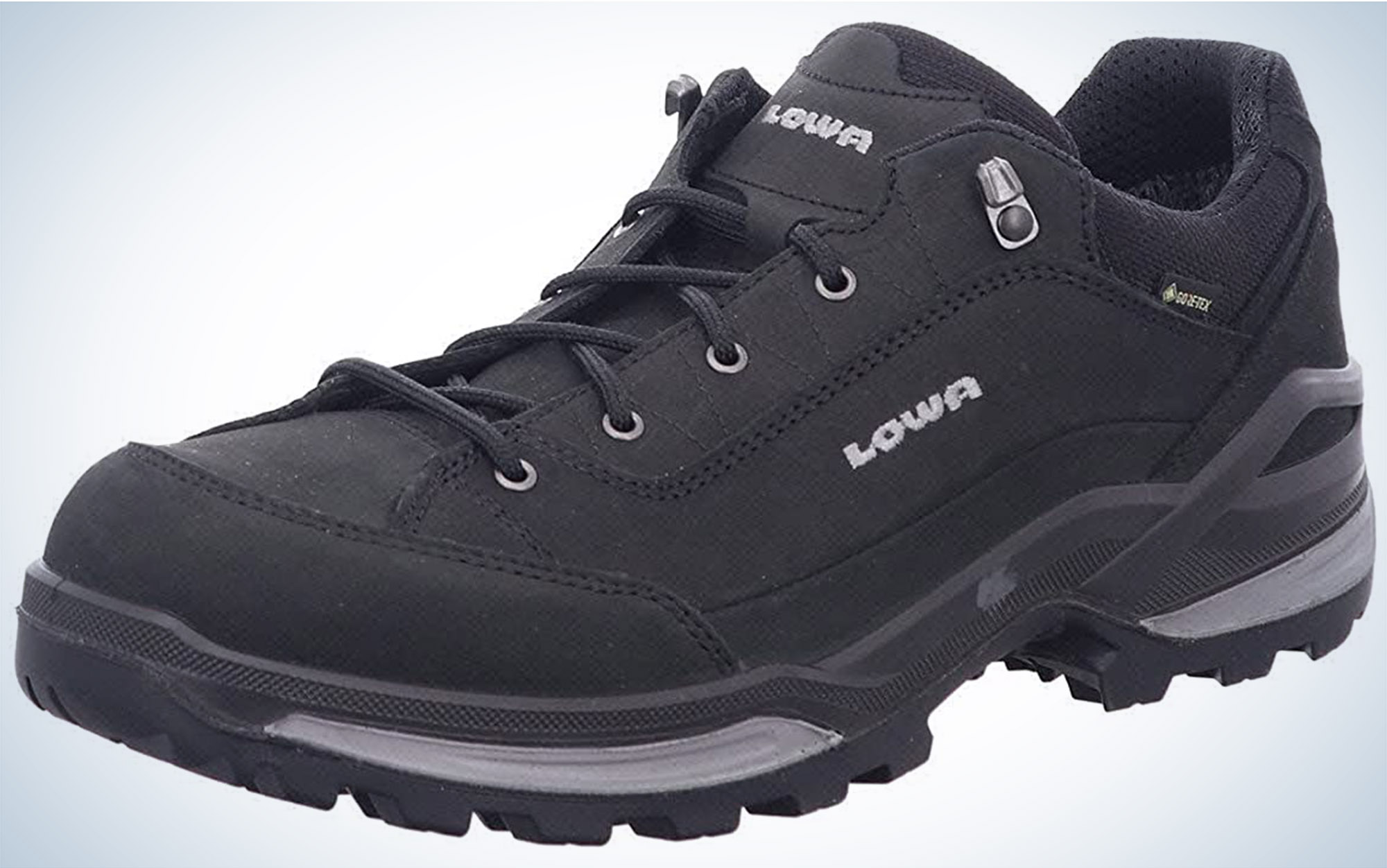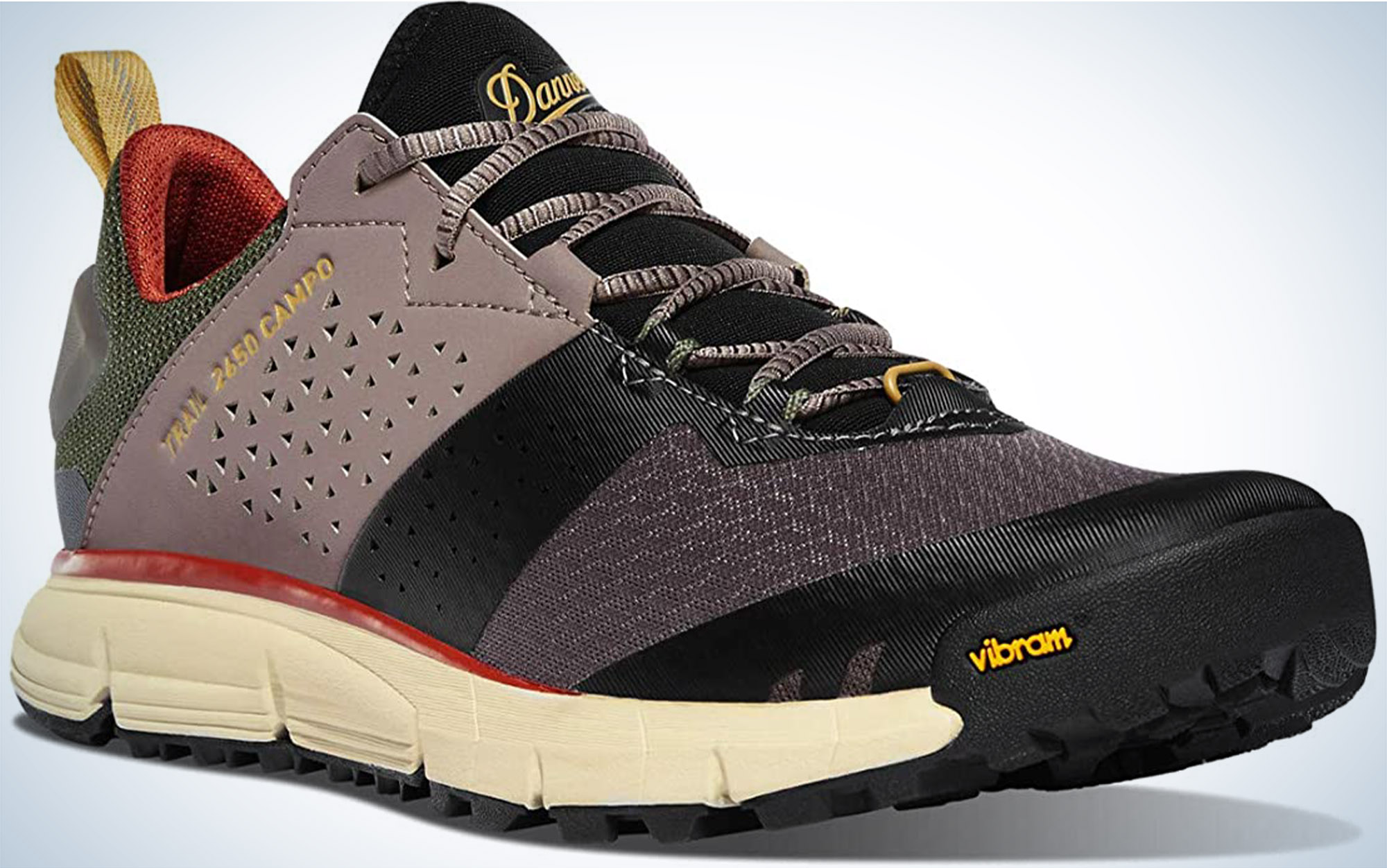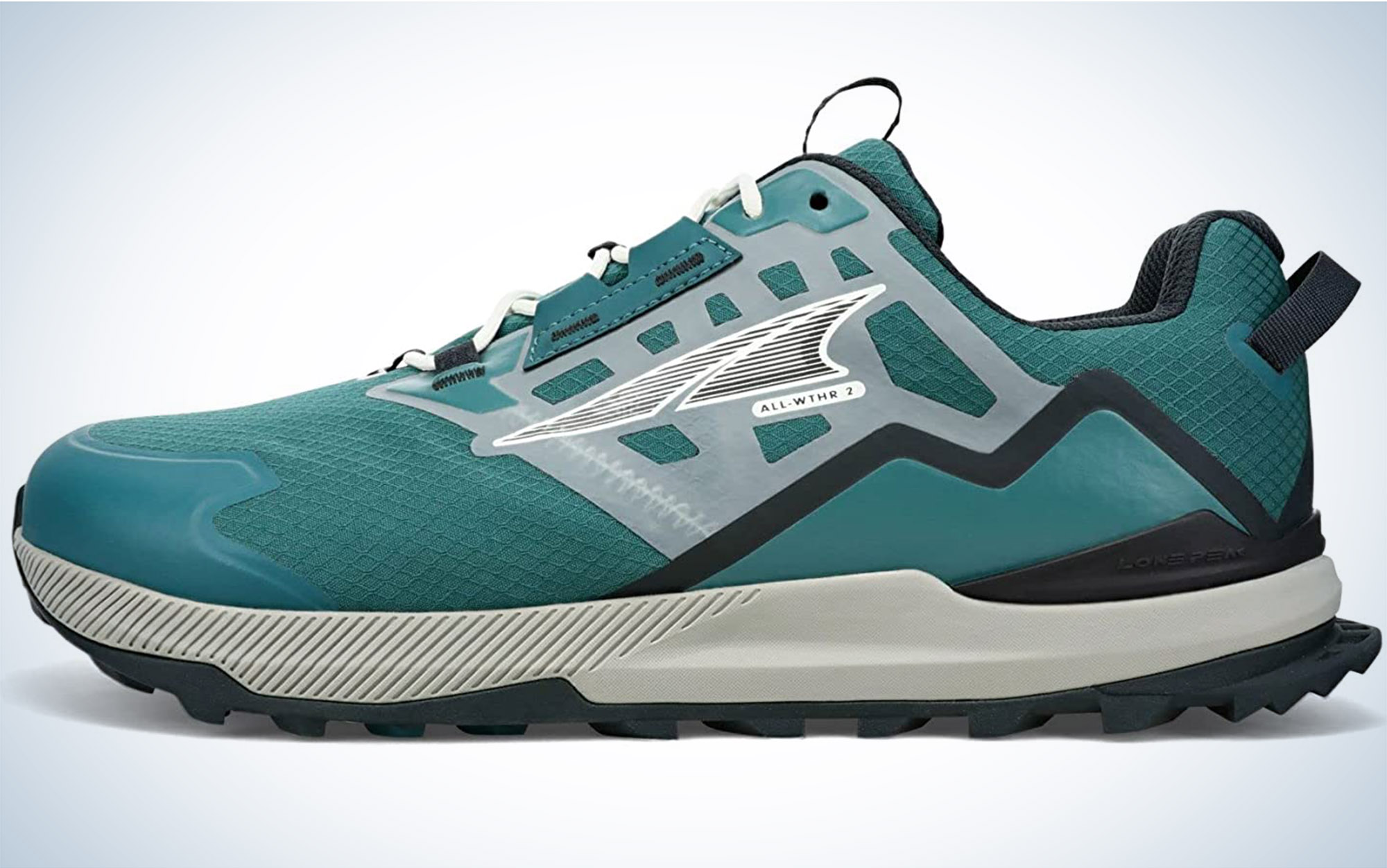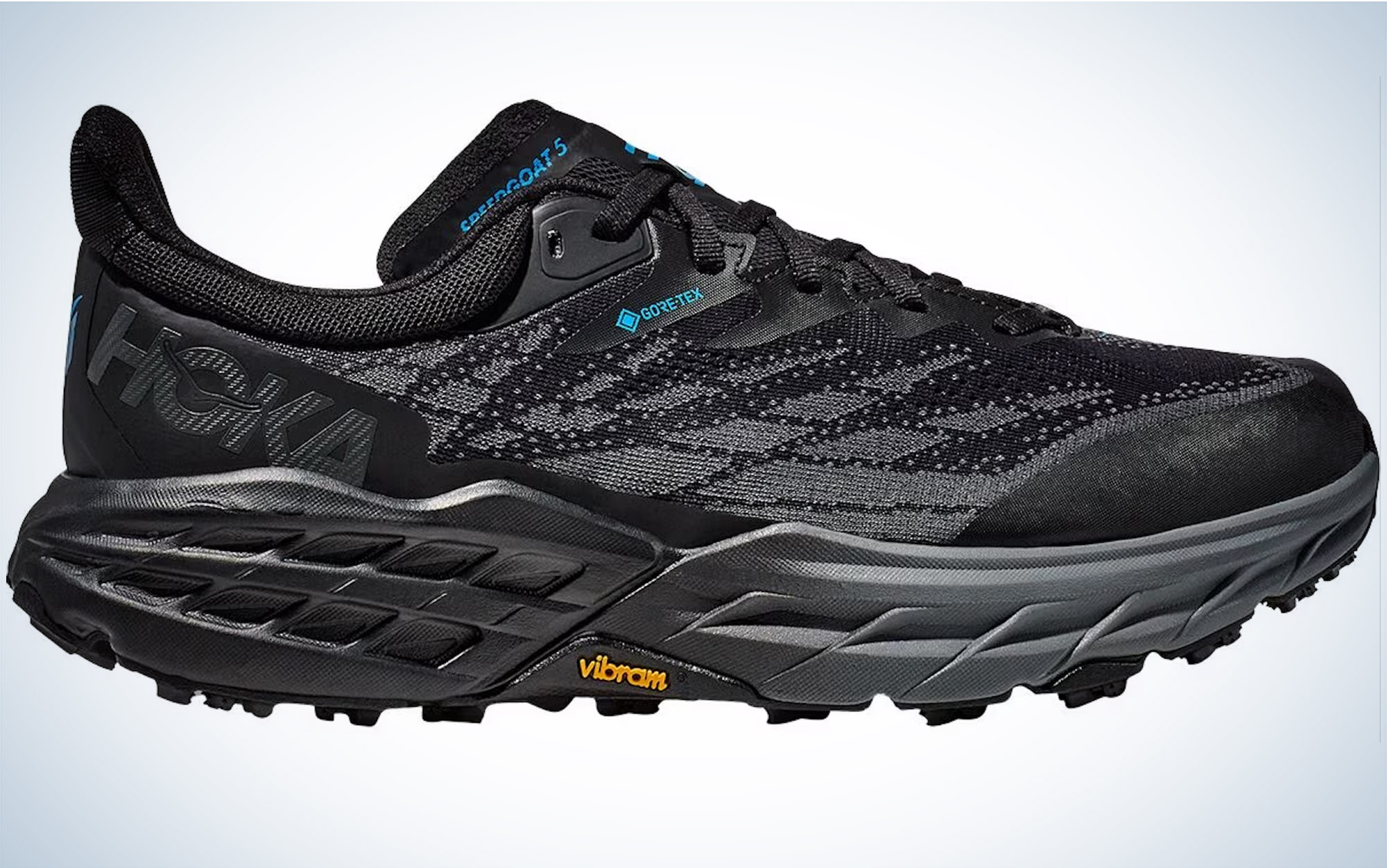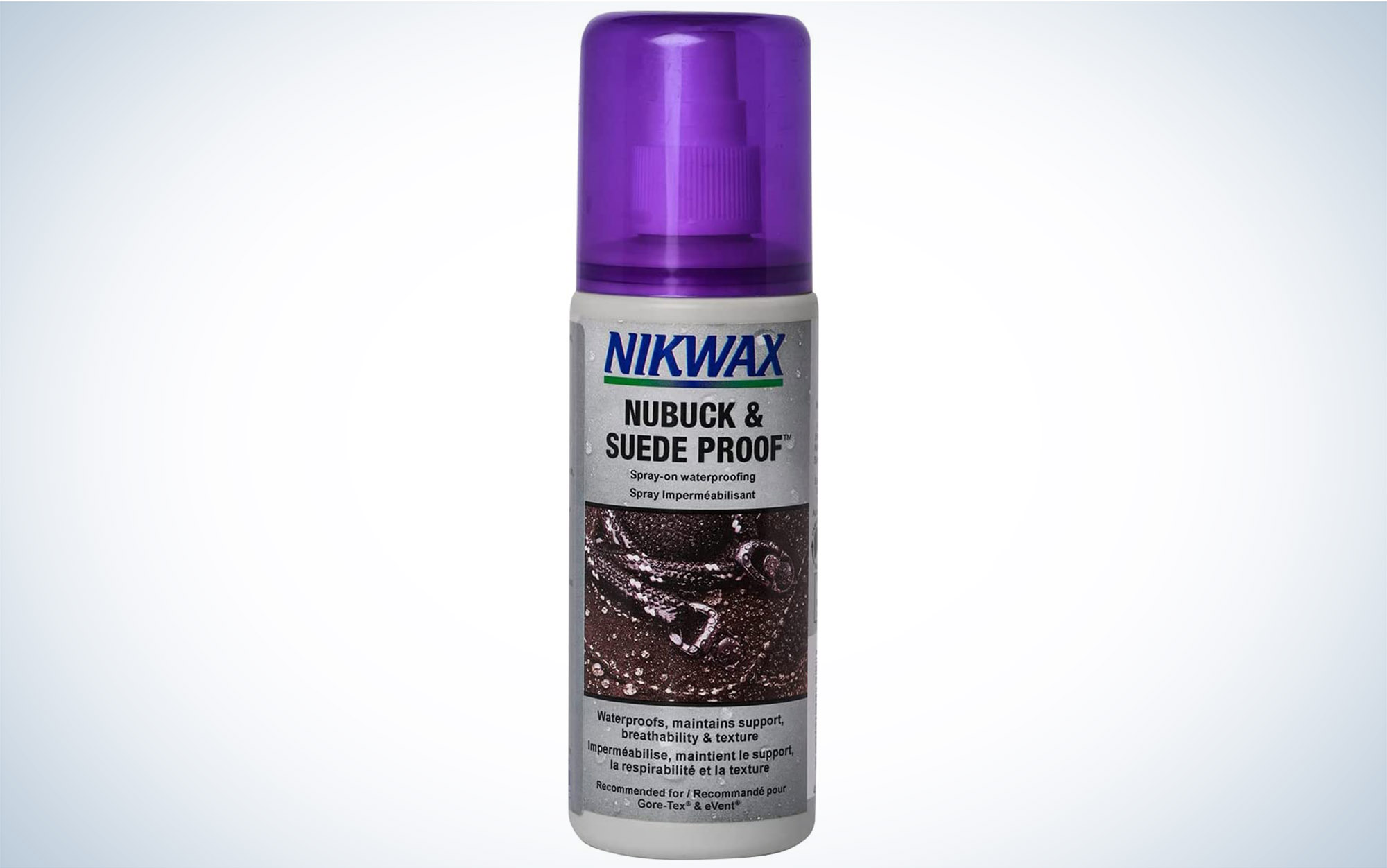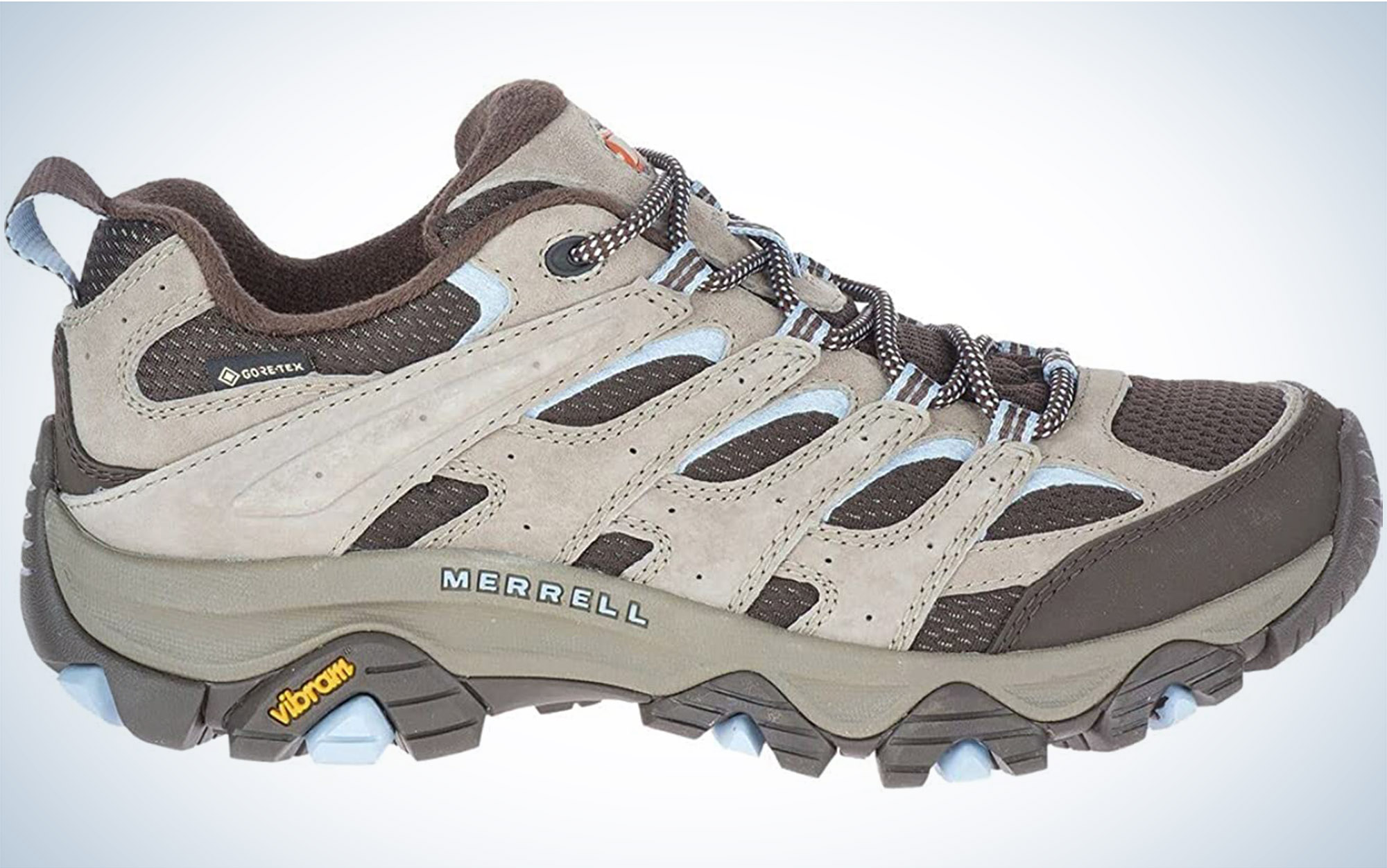We may earn revenue from the products available on this page and participate in affiliate programs. Learn More ›
Published Apr 19, 2023 2:35 PM
Everyone with waterproof hiking shoes knows a secret: rainy days are the best for hiking because the trails are nearly empty. You can hike for miles without running into another soul. It’s not too hot on those uphill climbs. And when the sun does finally peek out from behind the clouds, the light twinkling through the trees, the smell of fresh earth rising with the mist, is better than any vista. If you want a piece of this hiking heaven, you’ll need one of the best rain jackets and pants, a cover for the best daypack, and a pair of the best waterproof hiking shoes: here are our picks.
How I Chose the Best Waterproof Hiking Shoes
The Outdoor Life team has been surveying the landscape of shoes and boots from a number of different angles. We’ve surveyed the likes of the Colorado Mountain Club to find the best hiking boot. We left waterproof hiking boots in a bathtub for 14 hours to find out which were waterproof in name only. We called in guides from Denali National Park for their take on the best hiking boots for men. The assistant gear editor ran four hundred miles to find the best trail runners. And the Outdoor Life gear team collectively put the renown Altra Lone Peak through its paces, to see how the thru-hiking community’s favorite shoe fared across a range of different activities.
The picks for this story have been compiled from the range of the tests, surveys, and reviews we’ve compiled to date. While I’m confident that all of these shoes are high quality choices for your next outdoor adventure, keep in mind that for truly waterproof footwear your best bet is one of the best waterproof hiking boots, which provide more coverage for the top of your foot and ankle.
Best Waterproof Hiking Shoes: Reviews & Recommendations
Most Protective: Lowa Renegade GTX Mid
Key Features
- Sizes: Men’s 7.5-15; women’s 5.5-10
- Lining: Gore-Tex waterproof breathable membrane/polyester
- Outsole: Vibram
Pros
- Comfortable
- Short break-in period
- Great tread that grips well to a variety of surfaces
- Waterproof
Cons
- Less durable than other options
Lowa Renegades have long been known for being nearly as comfortable as a trail runner with all of the security of a classic hiking shoe or boot. “They were very comfortable from the first time I put them on,” one Colorado Mountain Club member said.
Like the majority of great hiking shoes, these come with a Gore-Tex waterproof liner and Vibram sole that ensures the Renegades grip well on a wide variety of terrains. The combination leather and Cordura upper provides additional waterproofing and, over time, forms to the foot for a secure fit.
The use of polyurethane in the midsole, while more comfortable for a wide range of hikers and backpackers, isn’t the most durable and can degrade over time. One CMC member noted that they “don’t last very long” compared to other hiking shoes.
Best Approach Shoe: Asolo Eldo LTH GV
Key Features
- Sizes: Men’s 7.5-13; women’s 5.5-9.5
- Polyester with Asolo/Vibram AG with MegaGrip compound
- Gore-Tex Extended Comfort Footwear lining
- Fits true to size
Pros
- Fast drying time
- Protected midsole
Cons
- Not meant for stream crossings
The Asolo Eldo Mid was my sufferfest pick from our roundup of the best waterproof hiking boots, and the low-cut version of this boot is built for the tough conditions encountered by rock climbers heading to the base of an off-trail climb. Its minimalist lacing design securely tightened around my foot with my heel locked in place. It features a grippy sole that is perfect for slippery rock. And it’s lightweight, with each shoe clocking in at well under a pound.
Not only was this shoe perfectly watertight after fourteen hours in a pool of water (thanks in part to the water-resistant suede wrapped around the connection point between the midsole and the upper), but it also dried surprisingly fast.
Best Hybrid: Danner Trail 2650 Campo GTX
Key Features
- Sizes: Men’s 7-14 (wides available); women’s 5-11
- Vibram 460 outsole
- Gore-Tex option
- Available in regular and wide
Pros
- Great fit
- Protects the foot like a traditional hiking shoe
- Fast break-in period
Cons
- Heavier than a typical trail runner
- Substantial heel-to-drop promotes heel striking
The Danner Trail 2650 Campo GTX splits the difference between a lightweight trail runner and more protective waterproof hiking hiking shoe. In preparation for an upcoming thru-hike, one tester took the Danner Trail Campo 2650 GTX on a series of day hikes that totaled fifty miles around Land Between the Lakes in Kentucky. She found that the integrated tongue of the shoe improved the overall fit, locking her heel into place and giving her the stability she was accustomed to from hiking shoes. Strategically placed leather panels on the upper also helped protect her toes and Achilles area, while the ventilation in the Gore-Tex kept her feet from overheating.
But they were more akin to trail runners when it came to comfort, “I did not have to break them in at all—they felt great on the first hike,” she reported.
Best Trail Runner: Altra Lone Peak All-Wthr Low
Key Features
- Sizes: Men’s: 7-16; women’s: 5.5-12
- Water resistant
- MaxTrax outsole
- Available in regular and wide
Pros
- Wide toe box increases stability
- Substantial lugs for improved traction
Cons
- Rock plate can inhibit ground feel
- Heel doesn’t lock in as securely
The Altra Lone Peaks combine the best features of responsive trail running shoes with the serious bona fides of a true hiking shoe. This shoe is a great choice for everything from long distances to day hikes to trail runs. It starts with a zero-drop in the stack height (meaning there’s no height difference between the front of the shoe and the back of the shoe), which promotes striking on the midfoot. Yet, they still provide enough cushion for committed heel strikers. The Lone Peaks also have an unusually wide toe box that allows your toes to splay as you hike, improving ground feel and promoting stability.
While not fully waterproof, the water-resistant construction is plenty enough to protect hikers from muddy puddles on rainy trail days. One OL staff member was also impressed by the substantial lugs on the Lone Peak 6, which performed well on a steep pass covered with wet leaves, “I felt in control even in the moments I slowed down out of caution,” they said.
Read the OL Gear Team’s full review: Altra Lone Peak 6 Review: We Put the Best Hiking Shoe to the Test.
Most Comfortable: HOKA Speedgoat 5 GTX Low
Key Features
- Size: Men’s: 7-14, women’s: 5-11
- Vibram Megagrip outsole
- Gore-Tex
- Available in regular and wide
Pros
- Comfortable
- Improved stability from previous models
- Excellent traction in wet, slippery conditions
Cons
- Can feel heavy
- Narrow toe box doesn’t allow the foot to splay naturally
The substantial cushion on the Hoka Speedgoat 5 will catch your eye immediately. This feature makes this shoe the go-to for a wide range of people, from day hikers to trail runners to thru-hikers. But the 32mm stack height belies the mild heel-to-drop on this shoe, which promotes a mid-foot strike (as opposed to a heel strike), which lessens the impact on the rest of your body—especially if you’re carrying a heavy load down a steep trail.
The waterproof version of this popular trail running shoe has a Gore-tex membrane running around it, keeping your feet dry on even the wettest trail days.
Compared to previous versions of the Speedgoat, the 5s have slightly less cushion but are substantially more stable. An OL staff member noted that, in combination with the Vibram outsole and 5mm lugs, these shoes were excellent on their state’s varying terrain. Whether backpacking or trail running, “from solid trail to steep scree fields … my foot felt secure and supported,” they said.
Best for Used Shoes: Nikwax Nubeck & Suede Proof
Key Features
- Volume: 125 milliliters
- Spray-on applicator
- Needs to dry overnight
Pros
- Revitalizes existing shoes
- Inexpensive
- Easy to use
- PFC-free
Cons
- Not as long lasting as Gore-tex
Maybe you already have a favorite pair of shoes, a set you’ve broken in that has lots of life left —but the waterproofing has broken down. Rather than buy a new pair of shoes and start the cycle all over again, you can refresh the waterproofing on your shoes with one of Nikwax waterproofing products, including nubeck and suede proof, fabric and leather proof, and waterproof wax for leather.
To use, simply wash all the excess dirt and grime off of your boot, clean them with some footwear cleaning gel and apply the right waterproofing spray for your shoe (depending on whether your shoe is synthetic, leather, or a mixture of the two). Once your shoe is dry you’ll be ready to hit the trails.
Best Budget: Merrell Moab 3 GTX
Key Features
- Sizes: Men’s 7-15; women’s 5-12
- Vibram TC5+ outsole
- Gore-Tex waterproof membrane
- Available in regular and wide
Pros
- Low price
- No break-in period
- Rugged
Cons
It’s no surprise that the Merrell Moab was a favorite of Colorado Mountain Club members for low-priced hiking shoes. For many people, including those with wide feet, it’s a comfortable hiking shoe from day one that doesn’t result in blisters. And the combination of suede leather and mesh will stand up to tough trail conditions. This is a hiking shoe that you can expect to own for several years without any issues.
The waterproof version of this shoe features a Gore-Tex waterproof membrane, which is also breathable, preventing unwanted sweat from turning the inside of your shoe into a puddle.
Like many hiking shoes, the Moab is heavy, and has a substantial heel drop, especially if you’re used to wearing lightweight tennis shoes. Your ankles may feel more fatigued more quickly in this shoe. It’s also designed to accommodate heel strikers, which is common but something to keep in mind if you typically have a mid-foot strike.
Things to Consider Before Buying Waterproof Hiking Shoes
To learn more about how to choose between hiking boots, hiking shoes, and trail runners, I chatted with Kim Kelley, a member of REI’s virtual outfitting team. Here’s what I learned:
Hiking Boot, Hiking Shoe, or Trail Runner?
The choice between hiking boots, hiking shoes, and trail runners is a matter of personal preference. Some like the secure fit of a hiking boot, while others prefer the more athletic feel of a trail runner. Still, others are looking for something in-between. A hiking shoe can provide a nice mixture of the foot and ankle support of a hiking boot with the lightweight, athletic profile of a trail runner. At the end of the day, the choice is about what’s most comfortable for you.
Ankle Support
It turns out that the upper of a hiking boot does not help prevent ankle rolling—it’s actually the firmness of the base that does this. If you’re thinking about switching to a hiking shoe from a hiking boot, you can test this by trying to twist the base of the shoe. If it moves, it won’t provide as much ankle support.
Arch Support
On long hikes or backpacking trips, it’s common for the arch of the foot to become fatigued, which can lead to plantar fasciitis. A common cause of this, especially among day hikers and backpackers, is overpronation, where the foot leans or collapses inward. Anyone experiencing this, or suffering from pain while they walk might benefit from one of the best insoles for hiking like Superfeet (individuals with exceptionally strong arches may prefer a Currex insole).
Shoe Size
With hiking shoes, it’s important that there’s some space between your toes and the end of the shoe—aim for about a finger’s width of space between the end of your toes and the tip of the shoe. For most people, that will work to about a half size larger than they typically wear. However, Kelley cautions that many people, especially women, rely on shoe sizings that they received when they were younger, and don’t take into account the natural growth of the foot over time. Getting your foot sized by a professional—something you can do through REI’s Virtual Outfitting without visiting a store—is an important part of choosing a hiking shoe.
Traction
Traditionally, one of the most important differences between trail runners and hiking shoes was the size of the lugs. But today, there are a number of trail runners on the market with substantial lugs that mirror the functionality of traditional hiking shoes or boots.
Durability
One important difference between hiking shoes and trail runners is durability. Hiking shoes typically last for 500 to 700 miles, while trail runners only last 300 to 500 miles. Factors that can affect this include the durability of the rubber, the sole, the midsole, and the uppers (leather vs. mesh), as well as the weight of the person wearing the shoes and the conditions they frequent.
FAQs
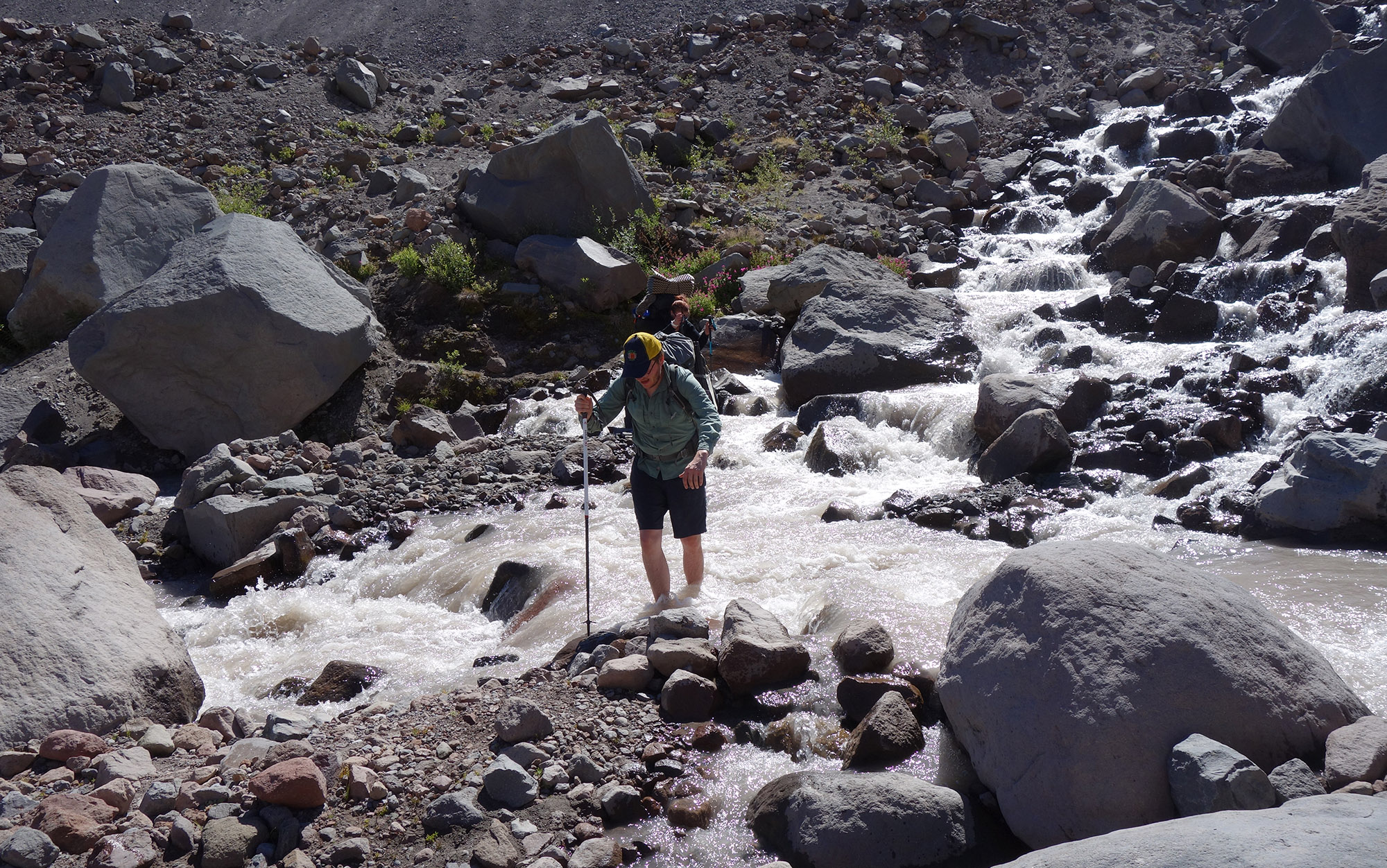
Q: Do I need waterproof hiking shoes?
Whether or not you choose waterproof hiking shoes is a matter of personal preference. If you live in an especially soggy part of the country, where muddy trails pockmarked with puddles is common, and keeping your feet dry is a top priority, then it will likely be the right choice for you. On the other hand, if you live in a hot and arid part of the country, waterproof hiking shoes may actually expose your feet to more moisture. That’s because waterproof hiking shoes typically prevent heat and sweat from wicking out of your shoe (even so-called breathable options).
Q: Are hiking boots better than hiking shoes?
While many people prefer hiking boots over hiking shoes for the additional support, the reality is that the flexible uppers on most hiking boots will not protect your ankle from rolling. (You would need to have a true stiff upper, such as you would see on a ski or mountaineering boot, for that.) What does protect your ankle from rolling is a properly fitting hiking shoe or boot that locks your heel in place so that it doesn’t move while you hike. Hiking boots do provide protection against inadvertently kicking yourself as you hike and keep debris out from inside your boot without the need for a hiking gaiter.
Q: How do I know if my hiking shoes are waterproof?
Most hiking shoes are labeled as waterproof at the point of purchase, but if you are trying to figure out if a hiking shoe you’ve had for a while is waterproof there are a couple of things to look for. The first is a tag attached to the outside of the upper—this is especially common with hiking shoes that are protected with Gore-Tex, but there are also other waterproofing technologies that may be advertised. Sometimes you may even just see a tag that says “waterproof.” The next is to check the underside of the tongue, where manufacturers will often include the shoe’s model code. You can then look this up on their website to see whether or not your hiking shoe includes waterproofing technology.
Q: How much do hiking shoes cost?
Hiking shoes typically cost anywhere from $100 to $200.
Q: Are hiking shoes worth it?
Hiking shoes are worth it for hikers on challenging terrain, but are not typically necessary for hikers on well-maintained single track. If you find that you’re insecure about your foot placement or that you are consistently slipping then the support and traction of a hiking shoe may improve your outdoor experience. Hiking shoes also typically last longer than traditional road shoes or even trail runners. However, if you are a casual hiker who sticks to popular trails that are well maintained and without challenging sections, then by all means feel free to stick with the ratty athletic shoes you already own.
Why Trust Outdoor Life?
Since 1898, OL has been a leading authority in testing and reviewing hunting gear, fishing tackle, guns and shooting equipment, and much more. We have more than a century-long history of evaluating products, and we’re now bringing that expertise to online reviews. Our editors are experienced outdoorsmen and women, and most importantly, we’re trained journalists. We prioritize field testing and objective data when reviewing products. We conduct interviews with gear manufacturers and engineers as well as outdoor experts so that our readers have an understanding of how and why a product works—or doesn’t.
Advertising does not influence our gear reviews and it never will. While we always focus our coverage on standout products—because we want our readers to be aware of the latest and greatest gear—we also cover the flaws and quirks of any given product.
Final Thoughts
If wet feet are keeping you from heading out into the backcountry during the shoulder season then it may be time to invest in a pair of one of the best waterproof hiking shoes. If you already have a favorite brand of hiking shoe, then start your search by checking to see if the manufacturer makes a waterproof version of that shoe. If you’re starting your search from scratch then consider any of the below picks:

